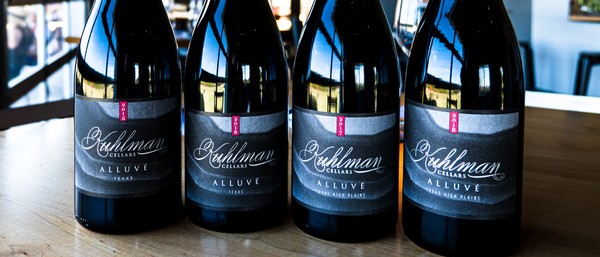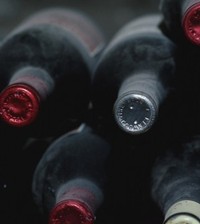Kuhlman Cellars Blog
Vina Vita University - Learning has never been so fun
Vina Vita University

Vina Vita. Literally “Wine Life”. This is not just the name of our wine club, it is also a cornerstone of our wine philosophy. It is an invitation to our community, an offer to join your individual wine life journey with ours as we taste, enjoy and appreciate the fine things in our lives.
For Kuhlman Cellars, the Wine Life isn’t just great wine, it’s also learning to appreciate it as well. You see this in our tastings when we![]() explore not just amazing wine, or wine and food pairings, but also in how we explore the reasons why we tend to enjoy the things we love. It’s an Ah-Ha moment we love to share!
explore not just amazing wine, or wine and food pairings, but also in how we explore the reasons why we tend to enjoy the things we love. It’s an Ah-Ha moment we love to share!
In our education efforts, we host a seminar series called Vina Vita University (VVU). These classes explore viticulture, harvest, wine blending, and wine and food pairing theory. Each class combines education with entertainment - and wine! We had to suspend these classes in 2020. But they are back!
On December 5th, VVU returns just in time for the holidays with one of our favorites: Naughty or Nice. This class explores what happens when a wine goes wrong - corked, cooked, Bret, oxidized. We will sniff and taste these common flaws to help you better identify them and know what to do when you encounter them.
Studying has never been more fun!
Curious to learn more about the Naughty or Nice Class?
Vertical Tasting?
Alluvé
Alluvé is our most popular wine. And for good reason! It is a beautifully balanced, complex red wine blend with medium body, lovely aromatics and nice fruit on the palette. It is an easy wine to love, while also offering nuanced layers to experience and explore over time.
The grapes in the Alluvé blend change each year, reflecting the bounty of Mother Nature’s harvest. While one year Sangiovese might be the lead grape, Mourvédre may take the lead in the next. What doesn’t change, though, is the style of the wine - an approachable red blend perfect on its own but also very food-friendly. (Our favorite pairing? Kuhlman Cellars Herbed Almonds, of course!)
It is remarkable how consistent the wine is from year to year. It has become our “House Style”, in the same tradition as the great Champagne houses of France, though Alluvé is a vintage wine each release.
We are often asked how Texas wine ages and matures. We jokingly say, we learn each day as our Cellar gets another day older! However, one of the most fun things to do is to taste through a Vertical of a single wine to see how the wine tastes as you go further back in time (or forward, depending on your tasting order.) What is a Vertical Tasting? This is when you taste through different vintages of the same wine - for example a 2015, 2016, 2017 and 2018 Alluvé. It is fun to experience what is consistent and what is different from each vintage, especially with the older ones.
Want to do a vertical tasting of Alluvé?!? You are in luck! We are launching a limited edition special tasting where you explore the 2015, 2016, and 2017 Alluvé as well as get a sneak tasting of the not-yet-released 2018 Alluvé! Even better, we also include a barrel sample of the 2020 Alluvé Offered once each Friday and Saturday at 11AM, this tasting will only be available for a short while starting November 5, 2021. Reservations can be made online here (link) or by calling our tasting room at 512-920 2675.
What is Non-Vintage?
First things first, let’s look at definitions.
What is “vintage” and what does it mean?
When a year is listed on a wine label – for example, 2017 Marl, “2017” is the vintage year. The vintage year listed on a bottle denotes the wine within that bottle was made from grapes harvested in that specific year. In our example, the vintage year is 2017. In the United States, a wine must be at least 95% from a single year in order to be labeled with a vintage year.
A “non-vintage” wine is made by blending grapes from two or more harvest years. The newest releases of Calcaria and Hensell are non-vintage wines. Our newest release of Calcaria is a refreshing blend of Roussanne, Marsanne, Trebbiano, Viognier and Albarino grapes. Familiar notes of ripe pear and honeysuckle are enhanced by delightful hints of papaya and white peach. Our newest Hensell is a blend of Cinsaut, Grenache, Carignan and Mourvedre. A classic, delicate Provence style rosé, this wine is reminiscent of fresh summer strawberries and cream.
So, does vintage year have anything to do with quality?
Great question! The answer is “yes and no”. Look, we all have good days and challenging days, right? Well, vineyards can have good and bad years. Depending on what happens in the vineyard in any given year, we could have a range of possible outcomes impacting quantity and quality of our fruit. In Texas, the biggest issue isn’t quality - it is Quantity.
A great vintage in Texas is when we actually harvest fruit. Freeze. Hail. Hurricanes. Drought. We have all sorts of weather related calamities waiting to destroy our fruit!
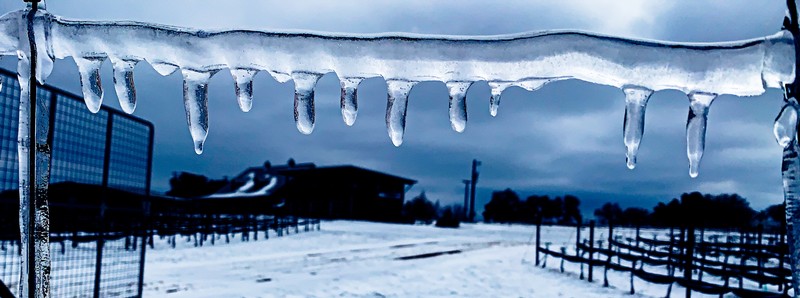
The “good vs. bad vintage” analysis is mostly dependent on weather - something we can’t control. In Texas, we often see wild fluctuations in the quantity of fruit. For example, if a vineyard is hit by hail, we might lose 60% or more of the crop im 5 minutes/ If we have a late spring frost, we can lose 100% of the crop before the vines even gets started. Alternatively, if we have ideal growing weather with ample rain, we might see excess fruit. Historically, we have not had “excess” fruit, but rather we have seen weather events reduce our crop yield. For example, in 2013, our first full commercial year, we lost 90% of our fruit to late spring frosts. More recently, we lost 50% of our fruit to a combination of frost and hail in 2020!
It can be very challenging to deal with high fluctuations in our fruit quantity. One way to smooth out quantity variations is to share of the “excess” fruit from one year with a “shortage” crop from another. We did this in 2020 in response to severe winter issues reducing our Texas High Plains crop. We simply held onto some of our awesome 2019 wines to support our lower volume 2020. This is where “balanced wine” shines through.
The Champagne houses in France (full disclosure: Champagne is my #1 go-to wine, closely followed by Kuhlman Cellars Hensell) utilize blending wines from different years to create non-vintage wines that express the “house style”. Where a single vintage can tell a story of a particular year in the life of a winery, a non-vintage wine can tell a story of life in a particular winery. At Kuhlman Cellars, we aim to provide the best and most balanced wines Texas has to offer every year – even if the wine represents more than one vintage year!
Reserve Tasting: The Gift of History
With our five year anniversary upon us, Kuhlman Cellars has something special now we have not had before: history. While of course 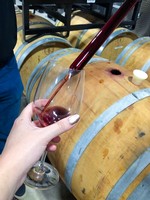 our history is in the making, we now have the gift of a place and entity transformed by time. Time takes our original story on a curvy road of changes, through both elated and bittersweet moments. Time transforms our story, as the former beginning and end morph into a completely different picture. The beginning seems to span more time than before while the end is somehow simultaneously where we wanted to be and yet not exactly as planned.
our history is in the making, we now have the gift of a place and entity transformed by time. Time takes our original story on a curvy road of changes, through both elated and bittersweet moments. Time transforms our story, as the former beginning and end morph into a completely different picture. The beginning seems to span more time than before while the end is somehow simultaneously where we wanted to be and yet not exactly as planned.
As we capture our history, we become able to share it. Our newest tasting, The Reserve Tasting and Tour, explores our history in physical form: through our vintages. The Reserve Tasting is a celebration of time. It is a way for us to share with you our history, our evolving vineyard, and our winemaking philosophy.
The Reserve Tasting is an intimate conversation with our winemaker Bénédicte Rhyne, who through the eyes of Kuhlman’s winemaking, takes you on a journey through our story. Together you travel through time, exploring the present moment with wine-in-progress (barrel/tank tastings) and our history with our library wines.
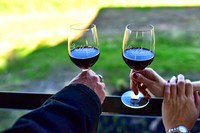
Opening each of the rare and special library bottles is exciting new territory. They are gifts to share. For Kuhlman Cellars, having a reserve library is not about bottles collecting dust but rather about sharing something special with our families and community. It is about experiencing wine and tasting the evolution. Each Reserve Tasting focuses on exploring a particular aspect of our vintage library. Bénédicte shares the story of each of these wines, what was happening with them at their birth, and then sharing in the experience of what they are now.
It is so reaffirming to know that our patience pays off--that the hard work keeps giving back to us years down the line.
The vintages of Kuhlman Cellars are our living history captured in a bottle. They charm and entrance us, and there is nothing better than sharing in our living history with the Kuhlman community.
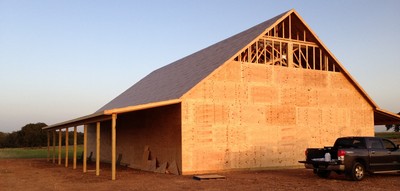
A New First - 2018 Hensell Allocation
2018 Hensell Allocation!
Probably the most frequent question I’ve heard in the tasting room the last 5 weeks is “when will Hensell be released?!”
We understand. We’ve been anxiously waiting too! Great news though: 2018 Hensell is ready for release!
Our big question was how should we do this? Waiting till September for the next scheduled club release seems too far away. Especially since Hensell Rosé is one of the quintessential summer wines in Texas! So, we’ve decided to do something new and present a new club membership perk:
Allocation
We are offering each club member the exclusive benefit of early-access to Hensell.
Each member has the opportunity (but not the obligation) to purchase between 3 and 12 bottles of Hensell! Simply log into your Kuhlman Cellars account, navigate to the Allocation section of your profile, confirm your bottle counts, add to your cart, and hit checkout. Simple!
You have until July 4th for the early-access Hensell pre-release. After that, it will be made available to general release in the Tasting Room.
But wait….there’s more exciting news!
We’ve also heard from our members who sometimes can’t make it to the winery. So, we are hitting the road this summer for a Hensell Roadshow! We will bring your allocation bottles to events held in major cities in late June!
If you’ve accepted the allocation, make plans to join us at one of the different events where we will sample Hensell and other Kuhlman Wines! Each location will also have a special Hensell food pairing which you can purchase to enjoy with a glass of Hensell. The best part is we will bring your Hensell to you (and any other wines you might want as well).
As always, be sure to bring friends! You can find the RSVP information here.
2018 Hensell Rosé
![]() For the 2018 Hensell, we continue pursuing our goal of exquisite Provence styled dry, aromatic roses. We’ve also changed the fruit blend, with this year being hand harvested Grenache and Cinsault from our great partners at Farmhouse Vineyards blended with some of our Estate grown, hand harvested Carignan.
For the 2018 Hensell, we continue pursuing our goal of exquisite Provence styled dry, aromatic roses. We’ve also changed the fruit blend, with this year being hand harvested Grenache and Cinsault from our great partners at Farmhouse Vineyards blended with some of our Estate grown, hand harvested Carignan.
Hand harvesting provides the most gentle handling of the fruit to preserve the delicate nuances while also conveying the most winemaking control to Bénédicte, our winemaker. Having grown up in Provence, Bénédicte's rosés are true to style and beautifully transport us all to the south of France and the epicenter of rose in the world!
This wine will be a certain palate pleaser for anyone seeking a refreshing, crisp, aromatic easy drinking wine. Enjoy with salads, shrimp & grits, BLT’s, as well as BBQ, duck & sausage gumbo, and Tex-Mex. Or, simply enjoy on a porch swing, poolside lounge or an evening relaxing with friends.
Enjoy!
Kuhlman Cellars: What's in a Name?
I was leading a tasting the other day and someone asked where our wine names came from and who named the wines. The very short 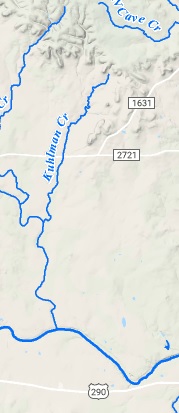 answer: me! The longer answer will be revealed in two parts: our winery name and then our wine names.
answer: me! The longer answer will be revealed in two parts: our winery name and then our wine names.
When Jennifer and I “bought the farm” back in 2010, we specifically sought a place both peaceful to our souls, but also furthering our family goal of a personal vineyard. The 34 acres we bought has a beautiful 10 acre pasture but also some hills and a small valley. Kuhlman Creek forms on this property, which is sited at the northern ridge of the Pedernales River Valley. As we face south, we have a beautiful view stretching 4 miles and several hundred feet gradual drop down to the river. It’s stunning and peaceful.
When we launched the winery, we struggled with a name. We didn’t want to name it after our family, because the winery isn’t about us. Further, we didn’t want to distract from our amazing wines and the meaningful experience of food and wine pairings. Some of you know we originally thought Kuhlman Creek Cellars, but dropped “creek” when we realized how many places already have a “creek” as part of their name! Kuhlman is anything but a follower or part of the crowd - we’ve completely redefined the meaning of wine and food pairings as related to wine tastings.
Back in 2010, the creek was a live water stream and had flowed seemingly uninterrupted for years, even through the terrible 1950’s drought. Our oldest son even caught some small perch in the creek, much to my surprise and a lost bet! However, the extreme drought of 2011-2013 changed that and the creek dried up. It’s flowing again on a seasonal basis, though the importance of water on all of our ecology can’t be understated. The Texas A&M Forest Service estimates approximately 300 million Texas trees perished because of the 2011 drought!
The winery is named after water - the foundation of life. Our wine names are about the dirt in which the vines grow, and their story will be told in a later blog. When we add in our unique Texas weather and our yearly labor of love in the vineyard and cellar, the result is wine. Really great wine!
Wine Blends and New Red Wines
Where did January go?!
I know I feel this way every new year, but we’ve turned around, took a breath, and have already flown into February! That’s exciting though because that means we’ve also enjoyed one of our favorite events: the Annual Super Bowl Tailgate party! That day was so much fun with wine and incredible food. And, we won the weather lottery - AGAIN - with stunningly perfect weather. It’s always risky in February in Texas, but we all adapt and do what we do.
Another reason I look forward to February: it’s time to think about our new vintage red wine blends! It’s an exciting and anticipatory time when we start talking about blends, volumes, and goals. It’s more enticing when Benedicte comes around with sample bottles and 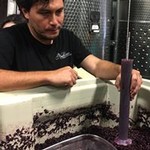 graduated cylinders.
graduated cylinders.
Our red winemaking process follows a general pattern: harvest in the fall to make red wine in individual lots from our different vineyards. Let the wine begin maturing in tank and barrel until February the following year, when unique terroir character becomes more evident. Bénédicte then begins her blending magic crafting the wines we’ve come to love as well as potential new. By the end of March, we typically settle on the blends. By June, the blending is typically complete and the wines then rest in barrel till bottling. Bottling is a long process guided by the wine’s maturation progress. Our first red bottling tranche typically happens in June, two years after harvest. A second bottling typically happens around 28 months post-harvest. We now have some wines which we are aging even longer to see how they develop in the barrel. Once bottled, the wines then rest anywhere from 4 to 12 months before release. It is a long process!
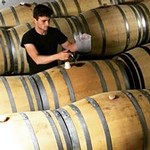 For 2017, we have some familiar red wines in barrel: Alluvé, Barranca, KanKar, Merlot, Zinfandel, Gypsum and Malbec-Merlot. Excitedly, we are producing several new wines, including: a Brunello Sangiovese, a Bordeaux Blend (Cabernet, Merlot and Malbec) as well as a Newsom Vineyard blend (Tempranillo, Cabernet, Malbec). These new wines are amazing, already complex, and teasing and testing the patience of us all. Bottling of these 2017 red beauties starts in June, but some of these wines might not be bottled for another couple of years. Patience!
For 2017, we have some familiar red wines in barrel: Alluvé, Barranca, KanKar, Merlot, Zinfandel, Gypsum and Malbec-Merlot. Excitedly, we are producing several new wines, including: a Brunello Sangiovese, a Bordeaux Blend (Cabernet, Merlot and Malbec) as well as a Newsom Vineyard blend (Tempranillo, Cabernet, Malbec). These new wines are amazing, already complex, and teasing and testing the patience of us all. Bottling of these 2017 red beauties starts in June, but some of these wines might not be bottled for another couple of years. Patience!
We don’t yet know the blends for 2018… ask us in a couple of months. We do know the Brunello will in the line up along with our regulars. What else awaits? We will just have to wait and see… there is no speed in winemaking, just the careful cadence of nurturing the vineyard and wine.
See you at the estate soon!
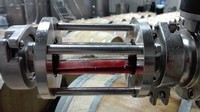
2019 Winter Pairing Menu
Welcome to 2019! Hard to believe we are already in January 2019. I know it is always this way as we wonder where last year went and what is in store for the new year. With the start of the new year, it is also time to debut the new 2019 Winter Pairing menu.
We rotate the menu every three months to keep things fresh, local and seasonal. Besides, it's always neat to 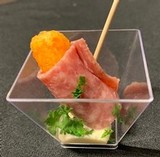 anticipate and then experience what new and different ideas Chef Cook has for us to enjoy. This menu is no different. To provide a little bit of a spoiler, we get to enjoy puffed Cheetos... wrapped in salami and dipped in an incredible avocado aioli paired with the 2016 Texas High Plains Merlot. Chester will be proud to see his snack elevated in ways unexpected!
anticipate and then experience what new and different ideas Chef Cook has for us to enjoy. This menu is no different. To provide a little bit of a spoiler, we get to enjoy puffed Cheetos... wrapped in salami and dipped in an incredible avocado aioli paired with the 2016 Texas High Plains Merlot. Chester will be proud to see his snack elevated in ways unexpected!
We are sometimes asked why we go through the effort to provide wine and food pairings. The answer is two fold: First, in our opinion, wines are best experienced when surrounded with friends, food and family. They facilitate community and conversation. Gathering around the table is the foundation of our food culture and traditions. We find ourselves connecting and reflecting. Wine helps us slow down and appreciate the bounty in our lives.
The Kuhlman Cellars food pairing tasting helps promote connections and relaxation. We sit at the tasting table where all are welcome. We find ourselves talking, laughing and sharing with friends new and old. It is amazing
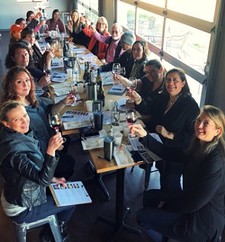
how many times new friendships are made or old ones are rediscovered by happenstance in the tasting room. That is what it is all about! We are pleased to facilitate this experience and have our wines be part of something special.
Second: growing and making wine takes a long time. Our red wines age around 30 months between harvest and release. KanKar, one of our flagship wines, takes about 38 months from harvest to release. So, let's not be in a hurry to slam down a wine-shot and race down the road. Instead, let's slow down, sit down, relax and savor. It is worth the effort.
The new menu will run until the end of March. This gives you plenty of time to find a day to reserve your tasting at the estate taste the wine and food bites. Don't forget, we also list out all the past pairing menus on the website, should you want to remind yourself of prior bites and perhaps new ideas for your own culinary adventure!
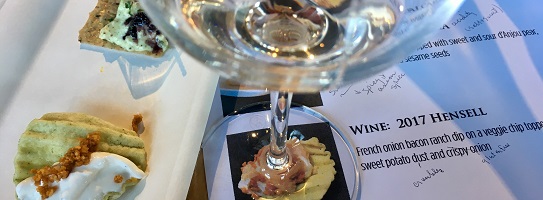
See you at the estate soon.
First Freeze of 2018!
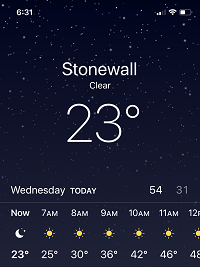 23* on November 14 brought the 2018 viticulture year at our three Fredericksburg, Texas vineyards to a fast frozen end!
23* on November 14 brought the 2018 viticulture year at our three Fredericksburg, Texas vineyards to a fast frozen end!
2018 was a challenging year in many respects, though really just another typical grape growing effort in Texas. I often describe Texas viticulture as one of survival. We have many risks to navigate: springtime frost, hail, disease, animal predation and "tropical rain events" (e.g., Hurricanes). Any year we harvest fruit is a success!
2018 started a little later than 2017, with the vines waking up in early March rather than late February. We avoided springtime frost and by April, growth was fast and abundant as the vines burst forth with the energy of Spring!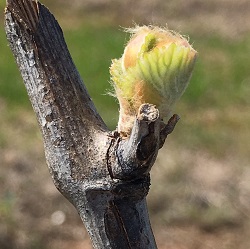
We had a very hot and dry growing season. The heat spike of June into July proved challenging as the vines struggle in excessive heat. The Estate Carignan, in prticular, seemed to suffer. The warm weather though, generally had the vines progressing through their maturation efforts quickly.
The estate fruit came in beautifully! We were pleased to get the first harvest off the Mourvedre in Block 1. This will be part of the estate Kuhlmanation Rose. We also welcomed the first ever harvest from our partner vineyard at Barons Creekside inside the city limits of Fredericksburg. This Petite Sirah vineyard is developing beautifully. Finally, we were relieved to harvest fruit at Cobb Family Vineyard again, after the racoon predation of 2017. We took the last fruit from the estate Carignan block 5 at the end of August. The fruit was beautiful. We harvested just in time too, as Texas weather rotated to a very wet early fall!
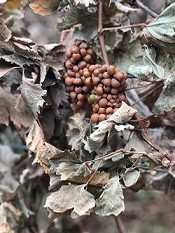 Keeping the vines healthy with all the rain was a challenge - the muddy vineyard made it tough to enter either on foot or tractor! Yet, the team managed and the vines made it through - and are looking great for next spring.
Keeping the vines healthy with all the rain was a challenge - the muddy vineyard made it tough to enter either on foot or tractor! Yet, the team managed and the vines made it through - and are looking great for next spring.
After the first freeze on November 14, the vines quickly went to sleep. As we walk the vineyards, we see the remnants of the season, including the occasional late developing cluster, now frozen in time. Texas viticulture isn't easy and it's never predictable. However, when successful, we are rewarded with distinctly unique, quality driven wines. We look forward to sharing the new vintage with you... but only when the wines are ready. For now, practice patience!
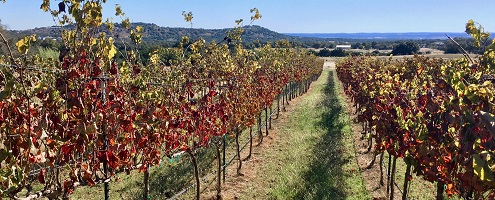
Better With Age?
The holidays are a time when giving and receiving can result in a nice stash of wine accumulating in your cellar. If hosting a holiday party, chances are a guest will bring a bottle of wine or Champagne as a thank you gift. Santa may deliver an intriguing bottle of your favorite varietal with a note to not open until Christmas… five years later. Rather than let your yuletide bounty of bottles sit on the kitchen counter, here are some tips for storing the gift of wine all year long.
Cellaring: Why?
Only 1% of the world’s wines are meant for “long term” storage. The other 99% is meant for consumption between immediate and up to 10 years. During that time, the way a wine is stored can help preserve the integrity of the product and encourage the long-term chemical reactions happening inside improving it with age.
Wines biggest ‘frenemy’ is Oxygen. Oxygen allows wine to ‘open’ when uncorked, allowing a wide range of aromatics and flavors to emerge. Prematurely introducing oxygen for long spans of time degrades and ‘spoils’ the wine. Wines with a high level of natural acidity help slow the oxidation process. . When you cut open an apple, the flesh begins to brown very quickly due to oxidation. Wine undergoes a similar ‘browning’. High natural acidity in wine helps slow the oxidation process much like lemon juice stops oxidation in fruit.
Tannin levels also help prevent oxidation. Tannins act like a “shock absorber” to process oxygen in a way that allows other chemical complexities to not bear the full brunt of exposure. Tannins are primarily gained from extended contact with the seeds of the grape and barrel aging. Storing wine properly allows tannin chains to be “used up” or broken, giving aged wine a softer, more nuanced body. White wines do not have the same exposure to the seeds and barrel age resulting in low tannins and a generally a poor candidate for long term storage. Try to consume white wines within three years of the date on the bottle for best results.
Cellaring: Where?
Every collector dreams of stepping into a stone-walled underground cellar lined with cedar racks nestling bottles like sleeping baby bats in a cave. Sadly, this romantic version of the perfect cellar is simply not reality for everyday urban living. A functional, practical cellar for storing wine can be incorporated into any home. These four simple rules will help save your wines from spoilage:
Find a cool place: Ideally wines should be cellared at 65 degrees. But here in Texas, following the rule of not exceeding 75 degrees is more practical. Find a spot that provides a stable temperature level and avoid wild heating and cooling fluctuations. Wines stored in excess of 80 degrees can ‘bake’ in the bottle causing heat damage.
-
Find a dark place: UV light rays are damaging to wine. Find a shaded space away from direct sunlight. Green or brown or bottles act as a UV filter, but prolonged UV exposure will harm the liquid in the bottle.
-
Bad Vibes: There are tens of thousands of complex chemical reactions happening in a single bottle of wine. Vibrations can speed up or deter these reactions from happening. Keep your wine collection away from heavy machinery like washers and driers, climate control systems and vehicles.
-
Going Sideways: Bottles should be stored on their side to maintain contact between the liquid and natural cork. Because cork is porous, it can contract when dry and allow unwanted oxygen into the bottle. For this same reason, don’t allow corks to dry out. Keep your wine in a place where fresh, humid air can maintain the natural sponginess of cork.
Navigating the Wine Aisle
One item not on the label of a bottle is how long it should be stored for. Price point can be an indicator of how long a wine can sit before consumption. The majority of wines that price under $30 are meant to be drunk within 1-5 years after the vintage date. Wines between $30 to $100 are meant to age for 5-10 years of the vintage date, though there are many exceptions. The quality of the bottle and cork can offer subtle insight as to whether the winemaker chose to invest in the longevity of the juice.
Keep in mind that long term aging is not a benchmark for quality. Many highly praised wines are not meant to age past 10-20 years; the chemical composition simply does not hold up over time. The lack of prolonged cellaring possibilities does not impact the quality of a wine consumed within its proper stored lifetime.
National magazines and wine websites often note wines with the potential for long-term storage. When looking for a wine gift (or a gift for yourself) with delayed gratification in mind, consult these resources so you can buy now and enjoy later. If you are looking to shop for local this holiday season consult The Texas Wine Journal for guidance with Texas grown and produced wines. The Journal offers ratings and descriptions compiled from a panel of professional sommeliers after tasting the wines blindly by category. You can find more information about the journal at TexasWineJournal.org. Happy Holidays and safe imbibing!
Kuhlman Wines that are expected to age:
2012 Merlot: expected to show improvement for 5+ years, assess the progress in 2017
2012 Texas Red: expected show improvement for 5+ years, assess the progress in 2017
2012 Barranca: expected to age gracefully from 5-10 years
2012 KanKar: expected to age gracefully from 5-10 years

